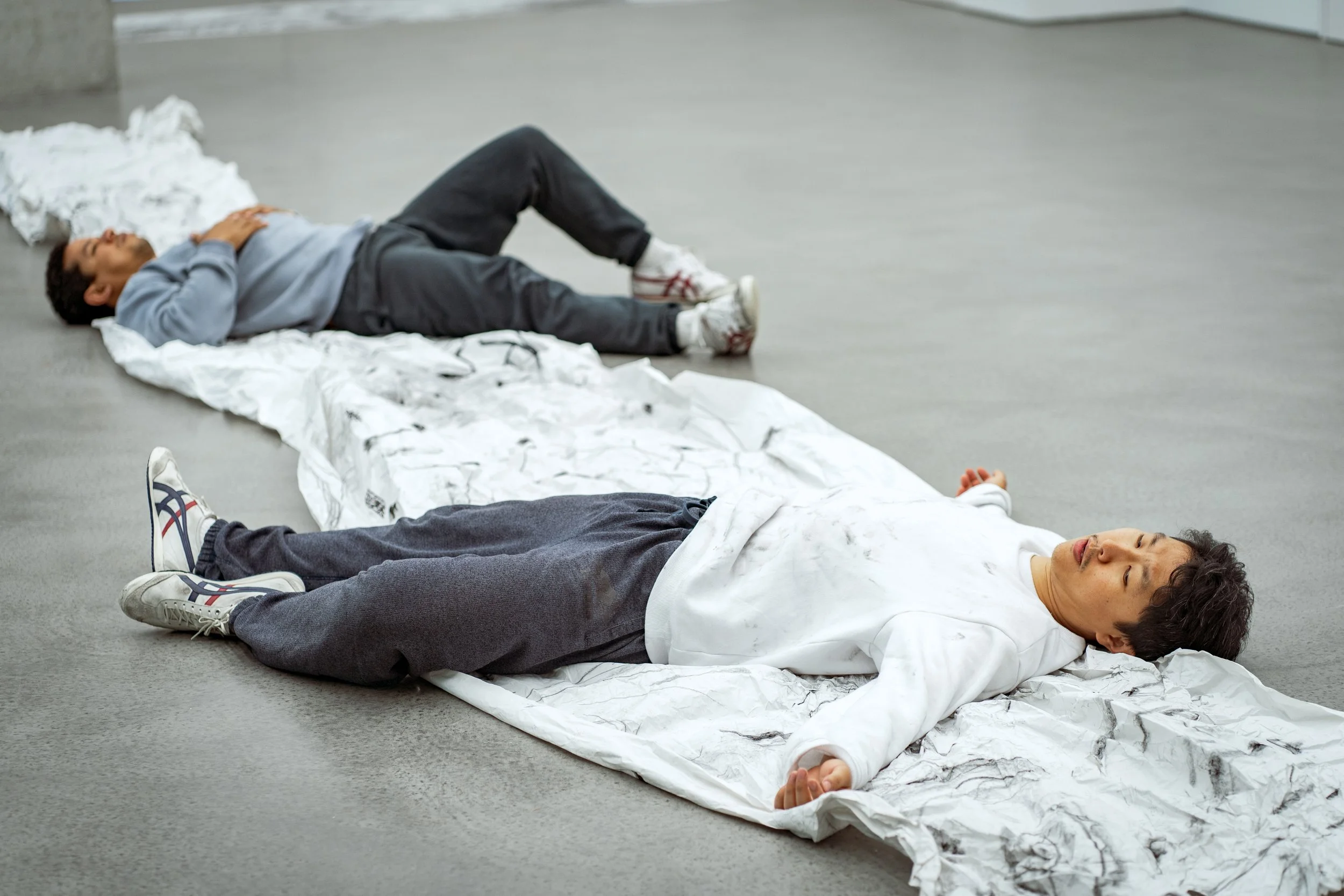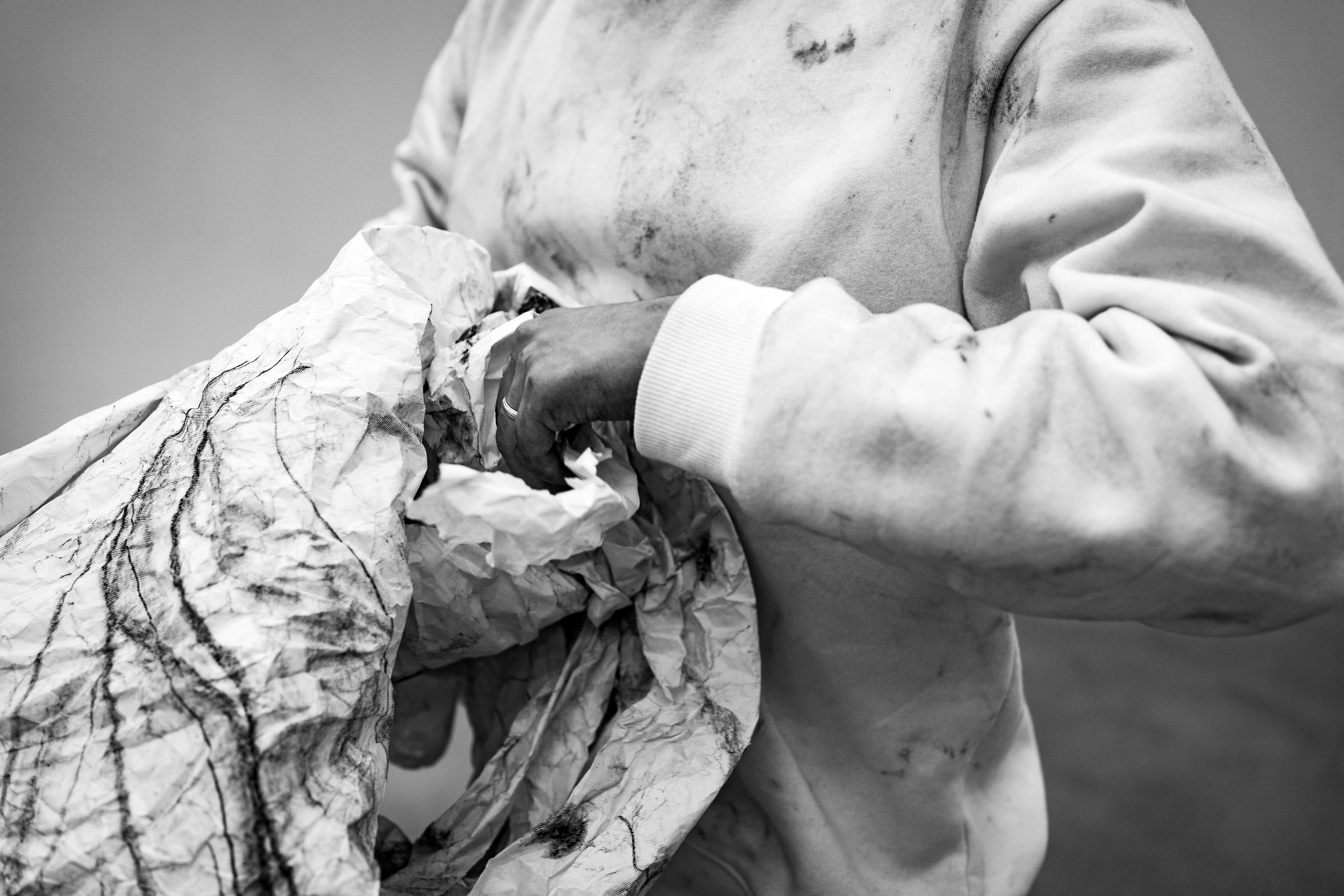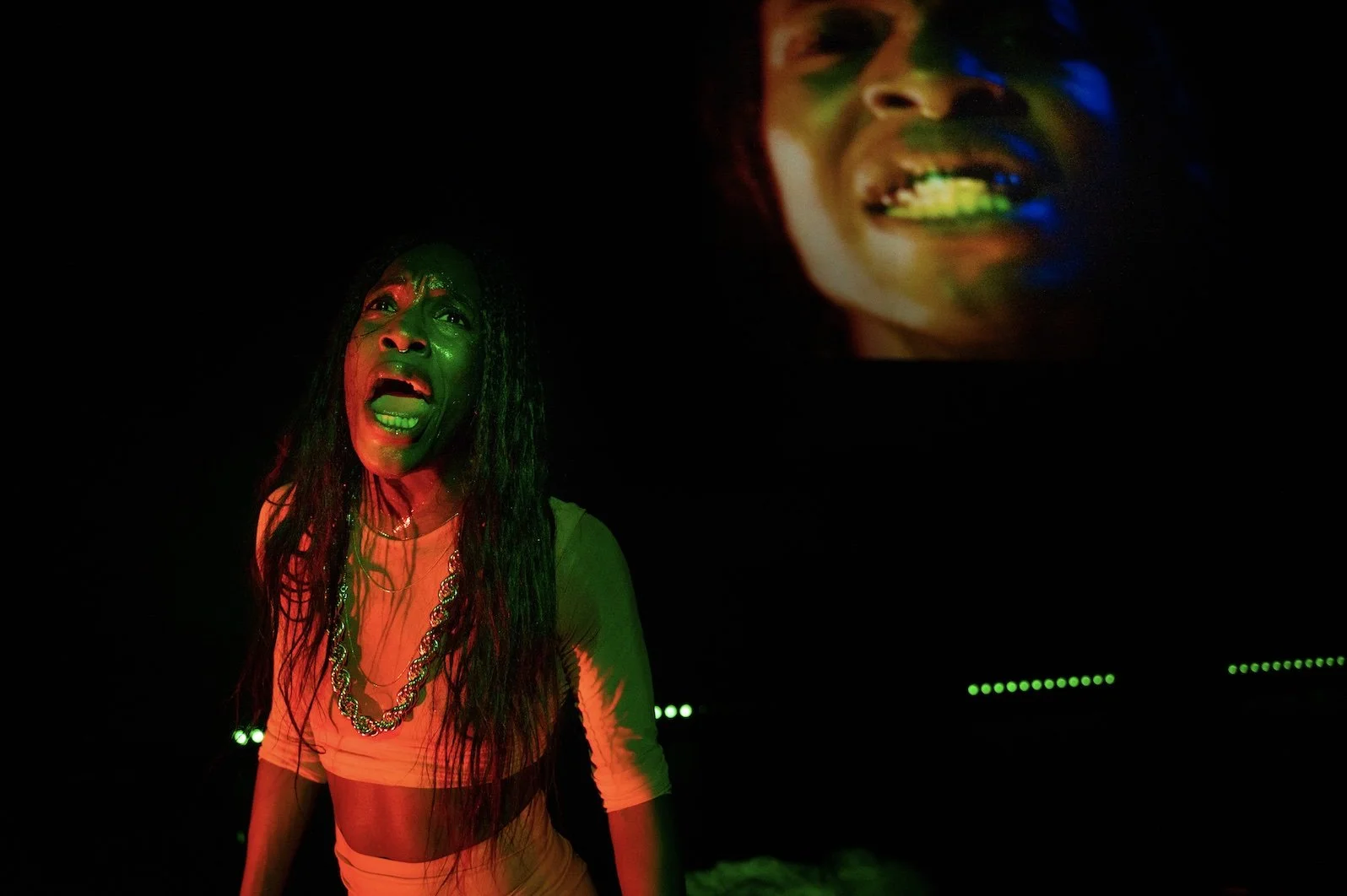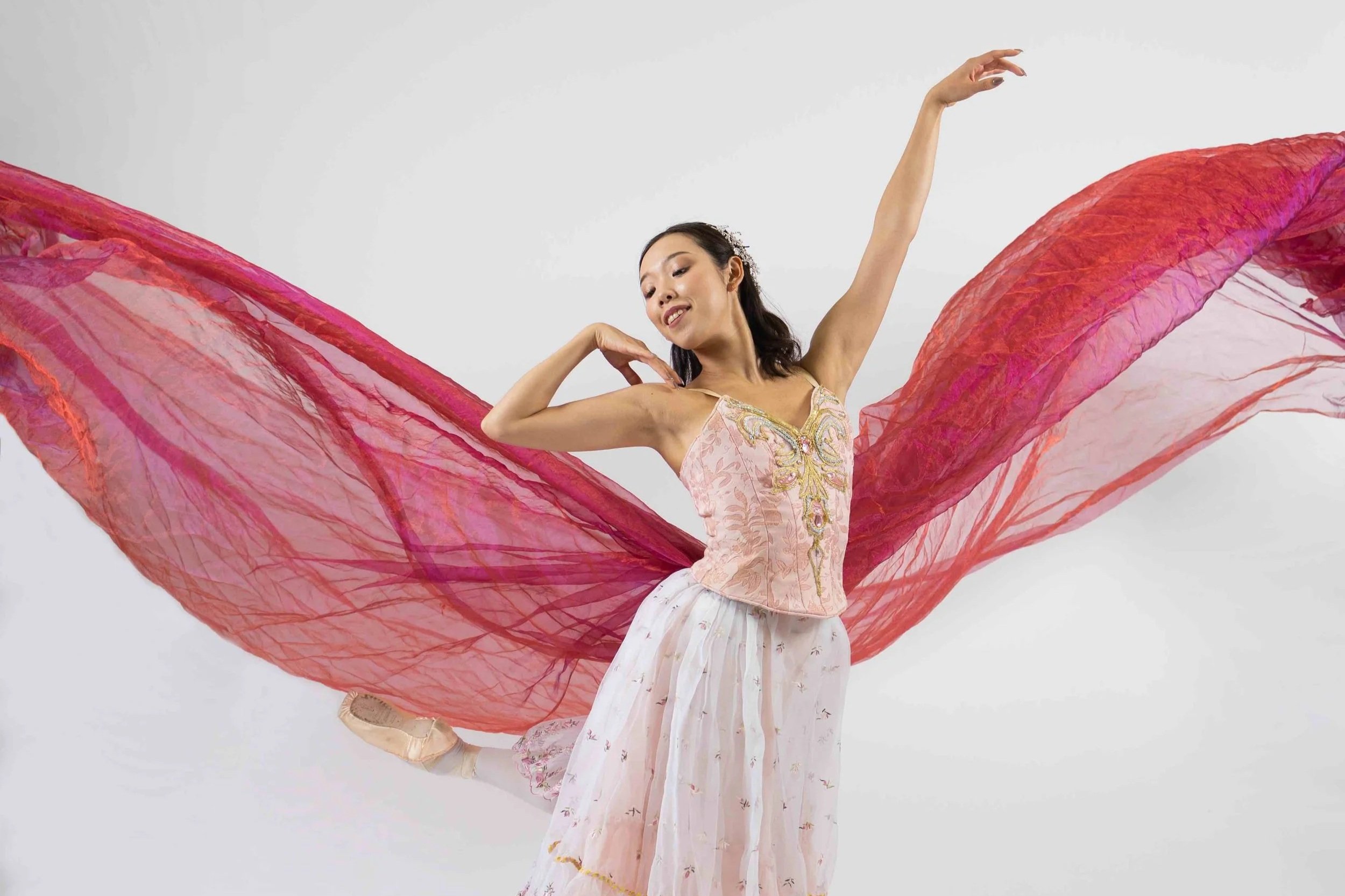Stir Q&A: Jean Abreu and Naishi Wang's Deciphers unpacks the complexities of language through dance
In New Works and PuSh Festival’s world premiere, performers draw upon experiences as immigrants from Brazil and China
Deciphers. Photo by Maya Yoncali
PuSh International Performing Arts Festival and New Works present Deciphers at the Scotiabank Dance Centre on January 26 and 27 at 8 pm, and January 28 at 2 pm with a post-show talkback
LANGUAGE IS THE grounding force for dancers Jean Abreu and Naishi Wang in their duo Deciphers, which is about to make its world premiere in Vancouver, care of the PuSh International Performing Arts Festival and New Works.
Born in Changchun, China and of mixed Chinese, North Korean, and Mongolian ancestry, Wang is based in Toronto. Abreu, meanwhile, was born in Brazil, and moved to London, U.K., to study dance and music. In a mesmerizing and physically intense performance, the pair combine spoken-word artistry in their respective mother tongues with Chinese folk dance, Brazilian dance, and ink on paper.
The co-creators’ performance at PuSh kicks off a Canadian tour that will see them travel to Toronto, Montreal, and Ottawa over the next month.
Stir caught up with them before the premiere to chat more about Deciphers.
How did the two of you meet, and what drew you to dancing with each other? Is Deciphers your first time collaborating together as a duo?
JA: We met online. I joke with Naishi that we flirted with each other online while following each other’s work on social media. Then a common friend [dance dramaturg Guy Cools] introduced us officially, and after that it was clear we wanted to work in the studio together. Deciphers is our first creative collaboration.
Deciphers is grounded in language, with moments where the pair of you are speaking in your respective mother tongues. What does language mean to each of you? How is it used in the piece—are you in conversation with each other?
Deciphers. Photo by Maya Yoncali
JA: As an immigrant, one of the first things I was confronted with was the language barrier, the need to navigate a foreign place with little understanding of it. So personally, my relationship to language was intensely amplified. When you don’t understand the language in the place you live, you begin to notice minute details in the way people talk, how they move, physically sensing the function of language, what it means to be understood or misunderstood. In Deciphers, we placed translation and communication at the heart of our process because of our shared immigrant experiences—but also, we wanted to highlight how language only plays a small part in human communication.
With Deciphers we wanted the body to be the ultimate source and carrier of meaning. Our conversation is happening totally in the whelm of the somatic physical bodily field, and rather than trying to understand each other at all times, we focus on the misunderstanding as a way to slow down and return to the body, as a way to find a shared journey.
NW: As an immigrant from China [who has been] in Canada for nearly 20 years, I’ve immersed myself deeply in the practice of contemporary dance and Canadian contemporary art forms, where bodily movements become my first language—expressing sensations and emotions that precede spoken words, or where spoken words seamlessly integrate with the language of the body.
The immigrant experience has subjected me to significant periods of loneliness, causing language to always feel secondary and somewhat insecure, regardless of whether I am speaking English or Chinese. This sense of isolation persists even when I return to China to visit family and friends; there, I feel like a foreigner in Chinese society as well. For me, I prioritize non-verbal cues, closely attending to body gestures, voice tone, and facial expressions of others while in communication.
In Deciphers, Jean and I strive to create physical poetry that celebrates the immigrant experience, focusing on the act of translation. Unlike Google Translate, which provides immediate answers, our approach emphasizes making nonsense, and embracing misunderstandings.
The performance embraces elements of both Chinese folk dance and Brazilian dance. How do these two styles play off each other? What similarities do they have, and how are they different?
JA: One of the things that became apparent from the beginning of our creative journey is that we both came from traditional dance forms, from China and Brazil, then transitioned to contemporary dance. In our explorations we were more interested in looking at this process of reshaping and adapting ourselves, migrating from one dance form to another, and what it meant to our original cultural movement languages.
For me, dance is present in every sphere of Brazilian culture. I grew up with it being a social collective act as well as ceremonial, but it’s much more informal. From what I noticed in Chinese culture and in my conversations with Naishi, though the dances in China are filled with the same intensity, they have a formality which is a reflection of their ancient history.
NW: Deciphers is an exploration within the realm of contemporary dance, where our focus lies in the deconstruction of various styles, honing in on the theme of “body translation”. For me, this theme delves into the profound layers of the body, drawing inspiration from the Chinese Qi philosophy, which is the foundation of Chinese folk, material art, and calligraphy principles. In Deciphers, I employ Qi-based somatic embodiment with emotions. This serves as a significant element, providing a rich and deep structure to the overall choreography.
Twenty years ago, I learned notable distinctions in the performance of Chinese folk dances; for instance, Mongolian dance exudes a wild energy reminiscent of riding horses, while Tibetan dance often features flowing movements accentuated by long sleeves. Unlike these forms, Brazilian dance (in my perspective observing Jean), is inherently more social, fostering connections through physical touch and movement interaction.
Deciphers. Photo by Maya Yoncali
Deciphers employs a variety of communication forms—spoken word, written word, and movement languages. How does combining these methods help you explore themes like cultural links, transformation, and the immigrant experience? What kinds of emotions are conjured for you in these key moments?
JA: All the various forms of communication we use in Deciphers are to highlight the way we attempt to establish a connection and translate ourselves, activating these multiple linguistic tools as an interphase to reach each other. From my side in Deciphers, these attempts reflect the continuous transitory nature of my own immigrant life—now a foreigner in my birth country, a foreigner in my chosen country, always over-compensating and in a state of permanent translation. This situation triggers a vulnerable sense of loss, but also becomes a drive to keep going.
NW: This is a personal answer: In Deciphers, all the elements employed revolve around a central theme—the frustration born from the tendency to over-explain. Drawing from my personal experience as an immigrant [who has been] in Canada since 2004, I have developed a sense of self-doubt, and insecurity has coloured my interactions. The constant need to clarify becomes a source of emotional turmoil, with feelings of shame and anger primarily directed inward, adding complexity to the internal struggle.
As the piece’s world premiere at PuSh draws closer, which aspect of it are you most proud of? What are you most excited to share with audiences?
JA: Deciphers is an international collaboration between Canada and the U.K. I feel incredibly proud of our joint commitment to this process of navigating our geographical, physical, and cultural distances to create Deciphers, a testament to the enduring immigrant spirit. I am delighted to finally invite audiences to witness our work and learn how it reverberates with audiences and communities in Canada.
NW: I am thrilled to introduce Deciphers to PuSh audiences. I take immense pride in this work. Anticipating the audience’s response at PuSh, I am eager to see how the piece resonates and evolves. As the work reviews itself and transitions into the production stage, there is a great sense of honesty that I believe will endure in the hearts of the audience.















